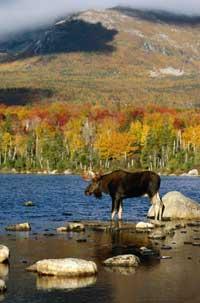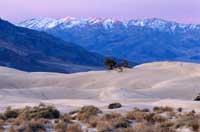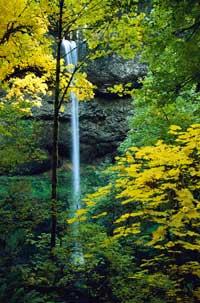2002, international year of mountain

Building on the current situation of forests around the world, the FAO (National Organization for Food and Agriculture) has organized for this year the actions aimed at implementing local projects.
Much more than the top
Mountain ecosystems are a fifth of the floating surface. It is estimated that a tenth of the human population obtains directly from the mountain the necessary ingredients to survive. In addition, the welfare of millions of people living in the plains depends on the state of the mountains.
Water and wood are the most appreciated riches of the mountain. In fact, it is known that forests, thanks to their capacity to absorb water in mass, have a great importance in the balance of the water cycle. Moreover, we cannot forget that most rivers and streams are born in the mountains. In arid and semi-arid regions, about 90% of the flow of rivers comes from the mountains. On the other hand, the mountain water is also widely used for the production of hydroelectricity. In Nepal there are 25,000 wheels and another 900 microturbines.
As for the wood, just take a tour in Marrakech and observe the function of the wooden piles of the banks of the bakery to appreciate the importance of the mountain. And it is that the wood of the Atlas is essential to roast the bread of the baked houses.

Finally, we cannot forget the biological richness of the mountains, essential for the whole planet. The communities that live on the mountain are the ones that best know the wild animals and plants of the jungles and, in addition to being a source of food for them, obtain from them other unknown advantages.
But the lives of mountain communities and their ecosystems are changing a lot. So far they only had to do with the markets of the region to access basic issues they could not find on the mountain. Now more and more people (many tourists) arrive. For example, in 1964, only 9,526 foreigners came to Nepal and, in 1993, 293,567 tourists. Given these changes, few governments have taken steps to limit tourism, as the influence of tourists is perceived as an engine of the economy.
Do not lose the value of the mountains

The 2002 declaration as the international year of the mountain aims to raise awareness among society of the need to preserve forest habitat and ensure the survival of local communities. The assessment of annual events will be done by measuring the impact in each country and taking into account the involvement of organizations worldwide.
Therefore, the movements that will be generated by regions will have a special relevance. According to the organizers, the administration responsible for the exploitation of the mountains pays more attention when it detects the presence of the inhabitants of the area. Italy, Kirgueria and Madagascar have already formed the committees that will work in this line. Other countries have models. We will know as soon as possible the events that will have greater impact.
Published in the supplement Estación de Gara.
Buletina
Bidali zure helbide elektronikoa eta jaso asteroko buletina zure sarrera-ontzian











